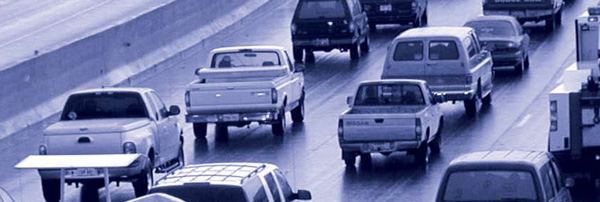
Introduction
Disasters can come in infinite varieties and can happen anywhere at any time, often without warning. Regardless of where in the spectrum the disaster falls, transportation is critical to evacuation operations, bringing responders to the scene, and transporting the ill and injured to medical facilities. To achieve an efficient emergency management response, transportation assets must be effectively utilized.
A 2003 report issued by the U.S. Nuclear Regulatory Commission (NRC) provided selected case studies on evacuations that occurred across the country from January 1, 1990, through June 30, 2003. The NRC observed that a large-scale evacuation involving 1,000 or more people occurs approximately every three weeks. The leading cause of evacuations was natural disasters (58 percent), with wildfires accounting for 23 percent of these evacuations. Technological disasters accounted for 36 percent of evacuations. These causes included hazardous material releases, train derailments, and traffic incidents. Malevolent acts, including terrorist attacks, accounted for six percent of evacuations. Due to the frequency of events leading to localized evacuations, local and State agencies, particularly in larger metropolitan areas, have become familiar with evacuation planning and its related issues and areas of concern such as transportation-disadvantaged and vulnerable populations, identification of decision makers, and the effects of an evacuation order.
Local and State agencies routinely handle evacuations from wildfires, floods, tornadoes, hazardous material accidents, or significant transportation crashes. The 2003 NRC study found that only 17 of the 230 evacuations over the past 12½ years involved 100,000 people or more. Fifteen of these evacuations were from hurricanes and two were from the 1993 and 2001 attacks on the World Trade Center in New York City. The successes of routine evacuations are often forgotten, while the images of suffering from these large-scale events endure for lifetimes.
The Federal Highway Administration (FHWA) studied several emergencies, including the 9/11 terrorist attacks and natural disasters such as Hurricane Floyd. The following common themes emerged.
- All types of security incidents have a transportation impact.
- Traffic impacts occur outside of the incident scene and can become a separate "incident".
- State, local, and regional emergency management plans do not fully integrate transportation agencies in their emergency planning.
- Traffic impacts during recovery may be more significant than during response.
- Transportation responders are often not:
- Linked fully with emergency managers
- Trained to work with other responders under the Incident Command System (ICS)
- Prepared with equipment and knowledge to deal with terrorist threats.